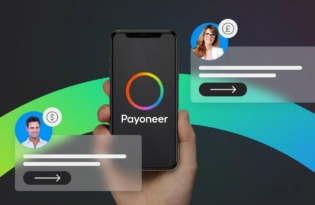How to nail your direct-to-consumer payment strategy
Asia-Pacific offers massive potential for DTC ecommerce. But cross-border payments can be a headache. We share an actionable strategy for DTC payments that’ll remove DTC payment hazards and expand your business with ease. What are you waiting for?

Going global, direct-to-consumer: get your payment strategy right
Finally! A guide for Asia Pacific online sellers that helps you get your direct-to-consumer (DTC) payment strategy right and expand into new markets.
In this playbook, we outline 5 steps for designing and executing a winning cross-border payments strategy.
If you have big plans for expanding your DTC ecommerce business into new markets and are experiencing growing pains when it comes to your multimarket payment strategy, then this playbook is for you.
Top cross-border targets
The global DTC market has seen significant growth during the COVID pandemic and beyond.
DTC ecommerce sales in the US are projected to reach $175 billion by 2023, a 56% growth from 2020. In India, the market is forecast to triple from 2020 to 2025, reaching a projected $100 billion in sales. (Source: Statista)
Most companies are striving to enter North America (60%) and expand across Asia (56.5%) as part of their cross-border ecommerce strategy.
Survey: What regions are you looking to expand your cross-border ecommerce business?
60%
North America
56.5%
Continent of Asia
46%
Continent of Europe
26%
Australia/New Zealand
Source: CDOTrends and Payoneer Cross-Border E-commerce Payments Survey
Companies that can nail their DTC payments strategy and implement an effective solution can build strong inroads in the North American and Asian markets, among others.
Payment pain points
When it comes to payments, DTC sellers can run into a number of obstacles and pain points, including.
- Establishing new entities
- Accepting digital payments
- Navigating local regulations
- Integrating with local payments
- High fees
- FX costs
- Poor customer service
- High fraud rates
DTC payments: a five-step action plan
- Determine your DTC target markets
The first step is understanding where your customers are.
Review your website’s analytics to see which countries drive the most traffic and sales. Compare that data against sources like Google Trends and SEO tools.
This analysis will show what products are popular in each country. - Identify your unique payment pain points
Local payment systems can vary significantly from country to country. And the impact of the payment experience on customers is often underestimated by companies that have been operating in their home market for years.
Anticipate payment pain points in each market and their effects on customer experience. - Know what questions to ask your prospective Payment Services Provider (PSP)
To accept payments in cross-border DTC ecommerce, sellers must navigate the complex ecosystem of payment service providers, acquirers and gateways.
We’ve outlined 8 questions to ask your prospective PSP – a separate guide for APAC sellers. - Select a payment partner(s)
Integrating the payment infrastructure yourself using multiple PSPs will require hiring developers to continually build and manage new integrations. Maintaining the various payment methods can become highly complicated.
A better approach is to avoid managing this complexity by yourself by selecting a partner that has already done this work for you — one that can provide the benefits of having a local payment solution in your target markets. - Integrate your payment solution
By combining payments through a single integration, you can avoid the complexity of building your own payment stack. Integrate your payment solution directly or via ecommerce platforms and start accepting payments from customers worldwide.
Take your ecommerce store to the next level
If you’re looking for a reliable payment acceptance solution designed with the seller in mind, Payoneer Checkout makes it easy to expand globally, increase conversions and maximize revenues.
Built for today’s world of open commerce, Payoneer Checkout offers ecommerce sellers a simple and reliable way to expand and grow through direct-to-consumer sales all around the globe.
As an online seller with Payoneer Checkout, you’ll be able to:
- Manage all your web store and marketplace earnings in one unified Payoneer account.
- Grow your revenue by saving on FX costs, generating more revenue due to superior acceptance rates for multiple currencies.
- Control and easily fight chargebacks with advanced anti-fraud solutions.
- Get approved, onboard, and integrate your store easily and quickly and then customize your checkout solution as you see fit.
- Use your combined earnings to pay suppliers or advertising costs, withdraw to your local bank, spend online or in-store, and much more.
Seize the opportunity to expand your business in the massive global DTC market with Payoneer Checkout.
Related resources
Latest articles
-
Made in India for the World: The State of Indian Cross-Border eCommerce
The Indian eCommerce market has grown significantly in the last few years. As a result, many cross-border businesses have undergone a fast-paced digital transformation and contributed to surpassing the government-set $400 billion target of trade within a single year.
-
Defying the odds: How Ukrainian businesses thrive during war
One year post-war, Ukraine’s businesses adapt and thrive amidst adversity. Entrepreneurs showcase resilience, reflecting national tenacity. Many diversify, venturing into e-commerce and digital realms. Despite hurdles, 44% of SMBs aim for growth, with 36% hiring. Their grit underscores Ukraine’s enduring spirit amid challenges.
-
An 8-point Checklist for Finding the Best Payment Provider
There’s huge potential to expand into ASEAN markets. But only for online sellers that accept local payment methods. Finding a trusted payment solution can be a worry and a challenge. Use this checklist to vet potential payment partners. With the right payment support, the sky’s the limit!
-
How to bill your international clients
Want to learn how to bill international clients when you’re based in the Philippines? In this article we spoke to three leading business owners who shared their tips to working successful international work. Learn how they collect payments and more below.
-
How to nail your direct-to-consumer payment strategy
Asia-Pacific offers massive potential for DTC ecommerce. But cross-border payments can be a headache. We share an actionable strategy for DTC payments that’ll remove DTC payment hazards and expand your business with ease. What are you waiting for?
-
How to pay international vendors in order to promote profits and reduce risk
In this article, we’ll share our expert tips and best practices for paying international vendors, so you can focus on growing your business. From choosing the right payment method to navigating currency exchange, we’ve got you covered.














